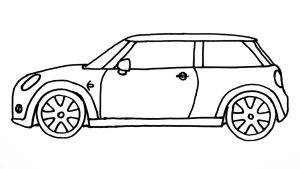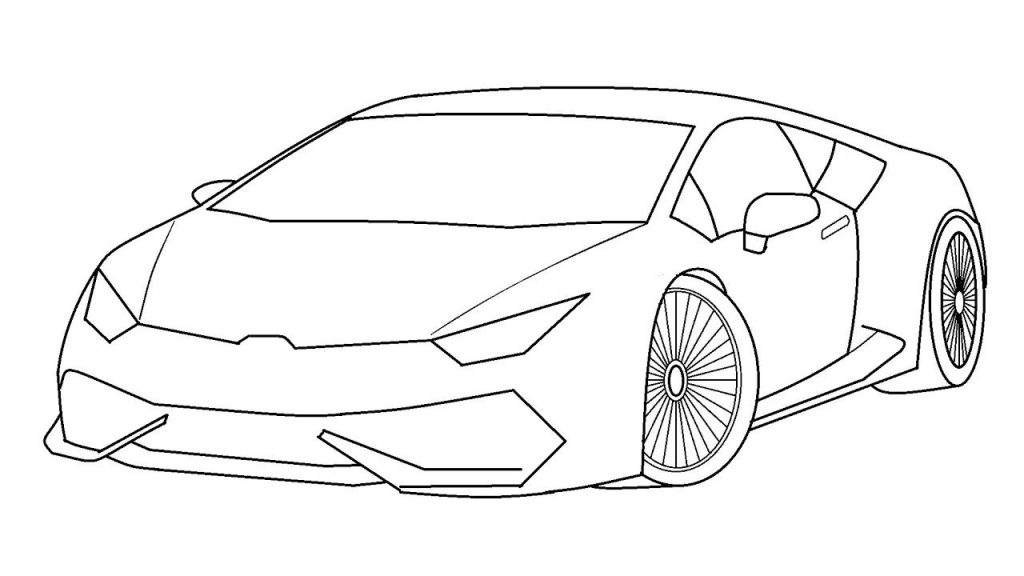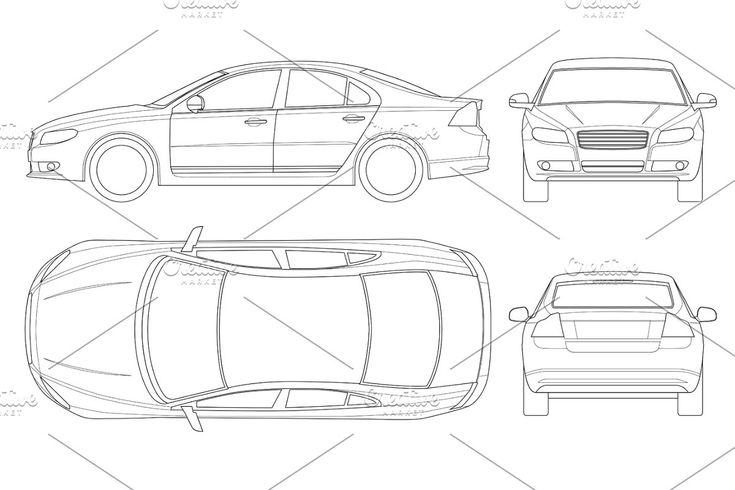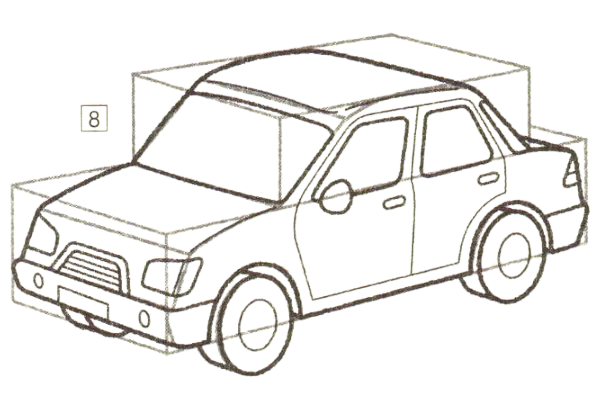Creating a detailed car drawing requires a keen eye for proportions, shapes, and intricate details. Beginning with a rough sketch, the artist lays down the basic framework, outlining the car’s distinctive silhouette. Paying close attention to perspective and scale, the contours of the body are gradually refined, ensuring a balanced and realistic representation.
- Unveiling the Art of Car Drawing
- The Dynamic Aspect of Car Illustrations
- Breaking Down the Elements of Car Drawings
- The Psychology of Car Shapes in Drawings
- Exploring Different Mediums for Car Art
- The Creative Process of Car Illustration
- Concept Cars and Imaginative Design
- Frequently Asked Questions (FAQs)

Unveiling the Art of Car Drawing
The allure of the automobile extends far beyond its mechanical prowess. Cars, for many, are rolling works of art, testaments to design, engineering, and sheer human ingenuity. And what better way to capture their essence than by translating them onto the canvas or screen through the art of car drawing?
From Pencils to Pixels: A Spectrum of Techniques
Car drawing is a diverse discipline, encompassing a wide range of styles and media. Traditionalists might favor the timeless elegance of pencil sketches, capturing the subtle curves and play of light with delicate strokes. (Image of Pencil sketch of a classic car)
Others might find their groove in the bold lines and vibrant hues of marker art, infusing their drawings with a dynamic energy. (Image of Marker drawing of a modern sports car)
Digital mediums offer a whole new realm of possibilities. Drawing tablets and software allow for precise control, intricate details, and the freedom to experiment with effects and textures. (Image of Digital drawing of a futuristic car)
Beyond the Surface: Capturing the Soul of the Machine
A great car drawing isn’t just about replicating the physical form of a vehicle. It’s about capturing its spirit, its personality. Whether it’s the sleek aggression of a sports car, the rugged charm of a vintage pick-up, or the timeless elegance of a classic sedan, the artist must convey the essence of what makes that particular car special.
This often involves paying attention to the finer details: the glint of chrome, the texture of leather seats, the way light dances across the paintwork. It’s about understanding the interplay of lines, shapes, and shadows to create a composition that is both technically sound and aesthetically pleasing.
Practice Makes Perfect: Honing Your Skills
Like any art form, car drawing takes time and dedication to master. But the rewards are immense. The satisfaction of seeing a beloved car come to life on paper or screen, the thrill of pushing your technical boundaries, and the joy of connecting with other car enthusiasts through your art – these are just a few of the reasons why car drawing is such a rewarding pursuit.
So, if you’re feeling the pull of the open road and the urge to express your passion for cars, pick up a pencil, grab your tablet, or fire up your drawing software and dive into the world of car drawing. With dedication and practice, you’ll be unveiling your own automotive masterpieces in no time.
Here are some additional tips for aspiring car drawers:
- Start with the basics: Before tackling complex perspectives and intricate details, focus on mastering the fundamental shapes and proportions of cars.
- Use reference photos: Don’t be afraid to use photos as inspiration or to help you with accuracy. However, remember to use them as a guide, not a crutch.
- Experiment with different styles: Don’t be afraid to try out different techniques and mediums to find what works best for you.
- Get feedback: Share your work with other car enthusiasts and artists and ask for their feedback.
- Most importantly, have fun! Car drawing should be enjoyable, so don’t take it too seriously. Relax, let your creativity flow, and enjoy the process.

The Dynamic Aspect of Car Illustrations
While static car drawings can showcase elegance and intricate details, there’s an undeniable magic to illustrations that capture the dynamism and movement of automobiles. These pieces transcend mere depictions of vehicles, transporting viewers into the heart of the action, the roar of the engine, and the exhilaration of the open road.
Here are some key elements that bring the dynamic aspect to life in car illustrations:
1. Composition and Perspective:
- Diagonals and Speed Lines: Using powerful diagonals, converging lines, and blurred speed lines effectively conveys the car’s velocity and direction. Imagine the elongated hood of a racing car tearing through the canvas, leaving a trail of vibrant streaks.
- Low Angles and Dramatic Cropping: Lowering the perspective puts the viewer right amidst the action, feeling the rumble of the asphalt beneath the tires. Cropping the car strategically can heighten anticipation, leaving just enough to ignite the imagination.
- Distortion and Motion Blur: Subtle distortions in the car’s body or the background can subtly suggest the immense forces at play. A touch of motion blur on the wheels or surrounding objects adds realism and emphasizes the blur of speed.
2. Light and Shadow:
- Dramatic Lighting: Strategic use of light and shadow can create a sense of drama and emphasize the car’s form. Imagine the sun glinting off a chrome bumper as it streaks through a tunnel, or the moon casting an elongated shadow on a deserted highway.
- Reflective Surfaces: Capturing the play of light on polished surfaces like paintwork or windows adds depth and dynamism. A puddle reflecting the distorted image of a speeding car can be a captivating detail.
3. Color and Texture:
- Bold Colors and Gradients: Using vibrant hues and dynamic color transitions can inject energy and motion into the illustration. Imagine a classic muscle car rendered in fiery reds and oranges, its paintwork reflecting the colors of a setting sun.
- Textural Effects: Simulating the texture of asphalt, tire smoke, or even the raindrops streaking across the windshield can add a layer of realism and immerse the viewer in the scene.
4. Storytelling and Atmosphere:
- Suggested Narrative: A dynamic car illustration is often just a snapshot in a larger story. Hints of the environment, like road signs, distant scenery, or other vehicles, can spark the viewer’s imagination and create a sense of context.

Breaking Down the Elements of Car Drawings
In the world of car drawings, mastering the art involves dissecting various elements to create a harmonious and realistic representation. Let’s explore the fundamental components that contribute to the magic behind an exceptional car drawing:
- Proportions Matter: Understanding the correct proportions of different car parts is crucial. From the wheelbase to the height of the roof, accurate proportions lay the foundation for a convincing drawing.
- Silhouette and Shape: The distinctive silhouette of a car defines its identity. Exploring the different shapes and curves that make each model unique adds character to your drawings.
- Detailing the Grille and Lights: The front end is often the face of a car. Delving into the intricate details of the grille and headlights brings personality and realism to your artwork.
- Wheel Dynamics: Wheels are not just circles; they convey motion and style. Paying attention to wheel dynamics, including spokes and rims, enhances the overall dynamism of your drawing.
- Interior Elements: If your drawing includes a glimpse of the interior, attention to details like dashboard layout, steering wheel, and seating arrangement adds depth and completeness.
- Shading and Reflections: Mastering shading techniques is key to creating a three-dimensional effect. Understanding how light plays on the car’s surfaces and reflects off windows and mirrors contributes to realism.
- Surface Texture: Different materials make up a car’s exterior. Whether it’s glossy paint, matte finishes, or chrome accents, capturing these textures adds richness to your drawing.

The Psychology of Car Shapes in Drawings
The shapes we choose for our drawn cars can reveal a lot about our psychological state and personality. While not an exact science, analyzing car drawings can offer insights into our:
1. Self-perception:
- Big, boxy cars: Often drawn by people who see themselves as strong, powerful, and in control. Think SUVs, trucks, or monster trucks.
- Small, rounded cars: May indicate a desire for playfulness, approachability, and a youthful spirit. Think Volkswagens or Minis.
- Sleek, aerodynamic cars: Can suggest a focus on speed, efficiency, and sophistication. Think sports cars or luxury sedans.
2. Emotional state:
- Angular, sharp lines: Can reflect feelings of aggression, anxiety, or tension.
- Curvy, flowing lines: May indicate calmness, peace, and a carefree attitude.
- Excessive detailing: Sometimes points to perfectionism or a need for control.
3. Aspirations and desires:
- Luxury cars: May represent a desire for wealth, status, and success
- Off-road vehicles: Can suggest a yearning for adventure and freedom.

Exploring Different Mediums for Car Art
When it comes to car art, the canvas isn’t confined to a flat sheet of paper or a digital program. The actual car itself becomes the platform for artistic expression, and the possibilities for mediums are as limitless as your imagination! Here’s a dive into some exciting mediums to explore for your next car art project:
Traditional:
- Paint: Classic acrylic, oil, or enamel paints offer vibrant colors and lasting durability. Stenciling, airbrushing, and freehand painting techniques can create stunning visuals.
- Wrap Vinyl: This versatile option allows for high-resolution printed designs or custom patterns, covering the entire car or specific sections. The removable nature offers flexibility for temporary art changes.
- Stickers and Decals: A budget-friendly way to add pops of color, graphic elements, or personalized messages. Vinyl stickers come in various sizes and designs, while custom decals offer tailored expression.
3D and Textural:
- Sculpting: Take car art to a whole new dimension with clay, foam, or even recycled materials. Create 3D figures, abstract shapes, or intricate textures that add depth and intrigue to your car’s surface.
- Lighting: LED strips, neon lights, or even internal fiber optic tubes can transform your car at night. Play with color, patterns, and movement to create a mesmerizing spectacle.
- Mixed Media: Combine any of the above! Paint over vinyl wraps, add sculpted elements to painted surfaces, or integrate lighting fixtures with decals. Experimentation and layering create unique and dynamic pieces.
Beyond the Car:
- Projection Mapping: Turn your car into a living canvas with projected videos or animations. This tech-savvy approach allows for dynamic, interactive art displays.
- Sound Installations: Transform your car into a mobile soundscape. Use speakers and car sounds to create immersive auditory experiences that complement the visual art.
The Creative Process of Car Illustration
The journey from blank page to breathtaking car illustration is paved with creativity, technical skill, and a dash of gasoline fumes. Buckle up as we explore the fascinating process of bringing automotive dreams to life:
1. Ignition: Spark the Idea
Every artistic adventure begins with a spark. For car illustrators, this spark can come from various sources:
- Classic Inspiration: A vintage muscle car gleaming in the sun, a sleek futuristic concept, or even a beloved childhood toy car can ignite the creative fire.
- Storytelling: What story does the car want to tell? Is it a rugged off-road warrior battling through a desolate landscape? A glamorous sports car cruising down a neon-lit street? Defining the narrative sets the visual tone.
- Technical Challenge: Pushing the boundaries of perspective, light, and anatomy can be a thrilling motivator for some illustrators. Think mind-bending reflections, intricate engine details, or capturing the raw power of a speeding vehicle.
2. Sketching the Blueprint:
With the idea in mind, the rough sketches take shape. This is where proportions, composition, and basic details are established. Pencils, charcoal, or digital tools dance across the canvas, exploring different angles, silhouettes, and moods.
3. Refining the Form:
The initial sketches serve as a roadmap, but now it’s time to refine the lines and add depth. This stage involves:
- Anatomy and Mechanics: Understanding the car’s structure, from the intricate curves of the body to the precise placement of headlights and wheels, adds realism and believability.
- Light and Shadow: The interplay of light and shadow sculpts the car’s form, creating a sense of volume and dimension. Mastering light sources and reflections is crucial for a dynamic illustration.
- Perspective: Choosing the right vantage point can dramatically impact the viewer’s experience. A low-angle shot might emphasize power, while a high angle could convey speed and agility.
4. Color Palette in High Gear:
Now comes the stage where the illustration truly comes alive – adding color! Whether it’s the vibrant hues of a classic paint job or the metallic gleam of a futuristic concept, the color palette plays a crucial role in setting the mood and tone.
- Color Theory: Understanding how colors interact and evoke emotions is essential. A warm palette might suggest excitement and energy, while a cool palette could convey serenity or mystery.
- Materiality: Different materials have distinct color characteristics. The gleam of chrome, the warmth of leather, and the grit of weathered paint – each needs its own unique color treatment.
Concept Cars and Imaginative Design
concept cars! The gleaming alchemists of the automotive world, where imagination is poured into molds of steel and glass, conjuring visions of what our roads might someday hold. These rolling testaments to design audacity push the boundaries of technology, aesthetics, and sheer wonder, often hinting at the whispers of tomorrow’s trends.
Let’s delve into the realm of imaginative design in concept cars:
Form Functioning Freely:
Unburdened by the constraints of mass production, concept cars morph into futuristic pods, aerodynamic rockets, and even gravity-defying leviathans. Think of the bubble-like form of the Volkswagen Nils concept, or the sci-fi elegance of the Mercedes-Benz VISION AVTR, its scales mimicking the flow of energy.
Sustainable Soulmates:
Sustainability isn’t just a buzzword – it’s a driving force in concept car design. Imagine the BMW iX Flow, where e-paper technology paints the car’s exterior in any color you desire, reducing the need for energy-guzzling paint booths. Or the Nissan BladeGlider, slicing through the air with its aerodynamic form and zero-emissions electric powertrain.
Tech-Savvy Titans:
Concept cars are playgrounds for cutting-edge tech. Picture the Hyundai SEVEN concept, its spacious interior transforming into a living room complete with a projector and retractable seats. Or the Lexus Skydrive, a personal flying pod that might just have you trading in your four wheels for wings.
Beyond the Driver’s Seat:
The future of driving might not involve a steering wheel at all! The Renault Morphoz concept morphs from a sleek city car to a spacious family cruiser, showcasing autonomous driving potential. And the Toyota LQ Concept envisions a future where AI companions understand your emotions and personalize your driving experience.
Frequently Asked Questions (FAQs)
- Start with simple shapes: Begin by sketching basic shapes like circles, ovals, and rectangles to represent the head, torso, and limbs. This will help you build a foundation for your drawing before adding details.
- Pay attention to proportions: The proportions of a girl’s body are generally different from those of a boy. For example, the head is typically larger in proportion to the body, and the waist is narrower than the hips.
- Oversexualization: Avoid drawing girls in overtly suggestive poses or clothing. Focus on capturing their personality and individuality rather than their physical attributes.
- Clichés and stereotypes: Don’t fall into clichés like damsels in distress or overly bubbly princesses. Be creative and explore diverse representations of girls.
- Art books and tutorials: There are many great books and online tutorials available that can teach you how to draw girls in different styles. Look for resources specifically focused on female figure drawing or character design.
- Online communities: Join online communities or forums for artists who draw girls. This is a great way to get feedback on your work, learn from others, and stay inspired.
Related posts:
- Landscape Drawing
- Oil Pastel Drawing : Mastering the Art of Oil Pastel
- Santa Claus Drawing : Tips for Drawing
- Save Water Drawing : How Art Inspires a Water-Wise Future
- Simple Drawings : Finding Beauty in Basic Lines
- Tree Drawing : A Beginner’s Guide to Drawing Trees
- Art Drawing
- Easy Sketch Drawing : The Magic of Easy Sketching




















